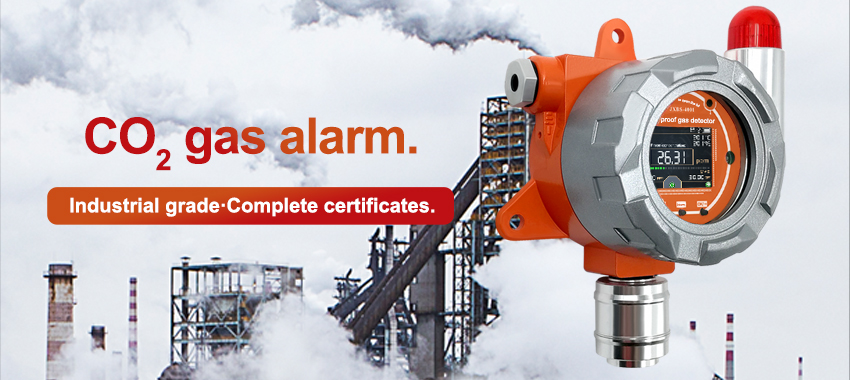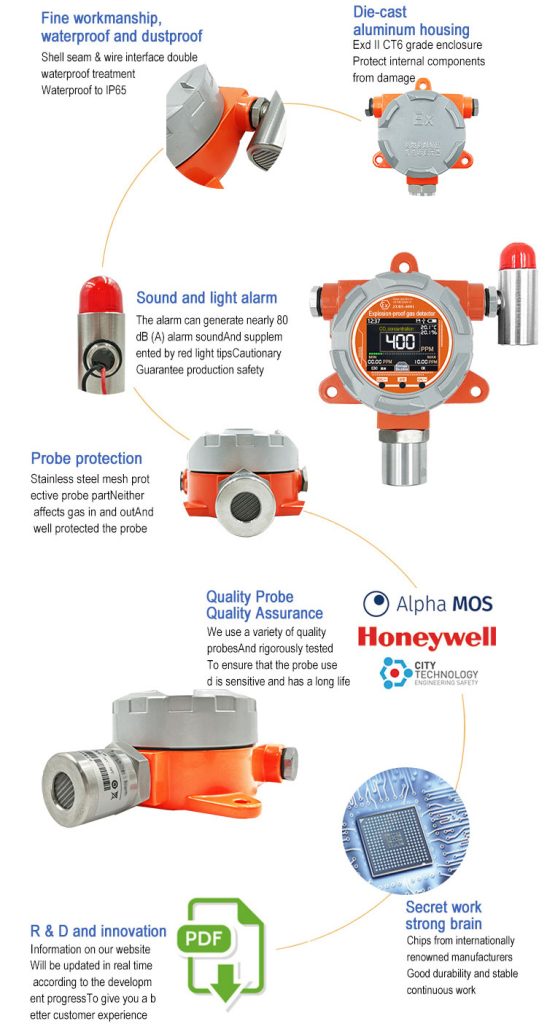A CO2 leak detector is a critical technology that plays a crucial role in ensuring safety and environmental protection. With the increasing concern over greenhouse gas emissions and their impact on climate change, these detectors are essential in identifying and preventing CO2 leaks, safeguarding lives, and mitigating potential environmental hazards.

The function of a CO2 leak detector
The primary function of a CO2 leak detector is to monitor and detect the presence of carbon dioxide gas in indoor and outdoor environments. Whether in industrial settings, commercial buildings, or residential spaces, these detectors continuously measure CO2 levels and raise alarms when concentrations exceed safe thresholds. This early warning system allows for prompt action to be taken, minimizing the risks associated with CO2 exposure.
One of the key benefits of a CO2 leak detector is its ability to protect human health and safety. High concentrations of CO2 can lead to asphyxiation, dizziness, headaches, and even loss of consciousness. By having a CO2 leak detector in place, potential leakages can be detected before they reach dangerous levels, allowing individuals to evacuate the premises or take precautionary measures to mitigate the risk. This ensures the well-being of occupants and prevents unfortunate accidents.

Furthermore, a CO2 leak detector contributes to environmental protection by alerting authorities to potential leaks in industrial facilities or storage areas. Carbon dioxide is a potent greenhouse gas that contributes to global warming and climate change. Detecting leaks in industries where CO2 is produced, transported, or stored, such as power plants or manufacturing facilities, helps prevent the release of large amounts of CO2 into the atmosphere. This proactive approach supports sustainability goals and promotes responsible environmental stewardship.
In addition to its immediate safety and environmental benefits, a CO2 leak detector also aids in energy efficiency and cost savings. High levels of CO2 often indicate poor ventilation or inefficient combustion processes. By detecting and addressing these issues promptly, energy losses can be minimized, and energy consumption can be optimized. This not only reduces greenhouse gas emissions but also leads to financial savings for businesses and individuals through improved energy efficiency.

Moreover, the integration of CO2 leak detectors into building management systems allows for automated responses and enhanced monitoring capabilities. When connected to ventilation systems or control panels, the detectors can trigger ventilation adjustments or shut down equipment in the event of a CO2 leak. This smart functionality ensures a rapid and effective response, minimizing the impact of the leak and preventing its spread to other areas. It also enables real-time monitoring and data logging, providing valuable insights for future analysis and optimization.
While primarily used in industrial and commercial settings, CO2 leak detectors are also gaining popularity in residential applications. With the increasing use of carbon dioxide for home appliances, such as water heaters or fire extinguishers, the risk of CO2 leaks exists. Having a CO2 leak detector in homes provides an additional layer of safety and peace of mind for residents, especially during sleeping hours or when occupants may be unaware of the leak.
In conclusion, a CO2 leak detector is a crucial technology that safeguards lives and protects the environment. By continuously monitoring CO2 levels and providing early warnings, these detectors ensure the safety of individuals, prevent environmental hazards, and contribute to energy efficiency. The integration of CO2 leak detectors into buildings and industries supports sustainable practices and responsible management of greenhouse gas emissions. As we strive for a safer and more sustainable future, the wider adoption of CO2 leak detectors is essential for protecting lives, preserving the environment, and mitigating the impacts of climate change.